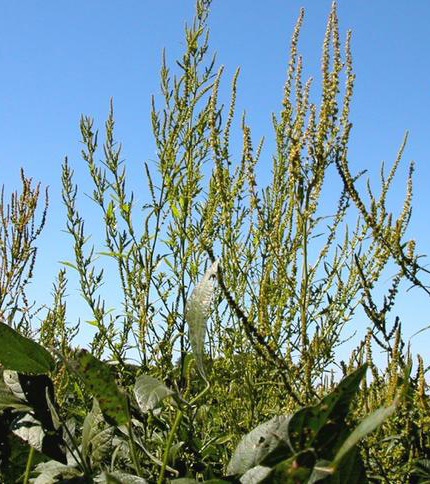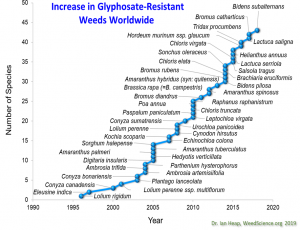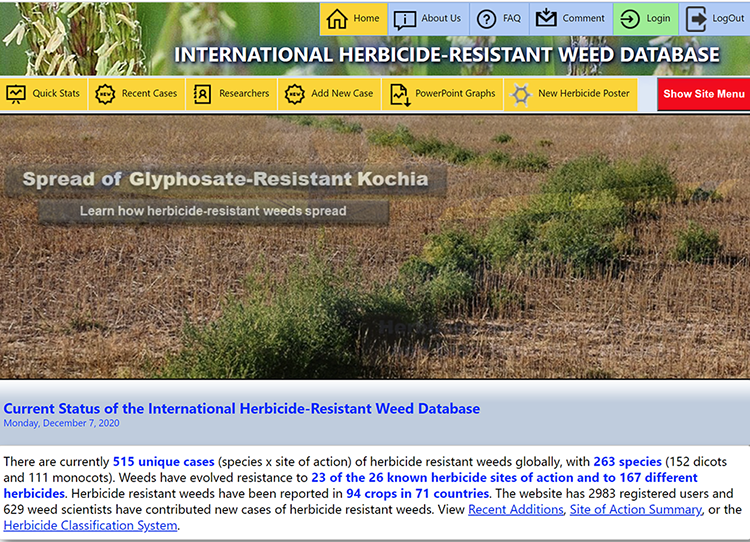Pest Resistance


Pests are by nature adaptable. When a pesticide is used repeatedly, targeted pests can develop resistance over time. Resistance triggers the need for higher doses and/or multiple applications of pesticides to effectively control now, less-susceptible pest phenotypes.
In the case of weed resistance, many corn, soybean, and cotton farmers have sprayed herbicides so frequently and in such quantities that some species of weeds have become almost impossible to control with herbicides that once worked really well. Similarly, many types of insects have become resistant to insecticides designed to control them. Today, many farmers are plagued by so-called “superbugs” and “superweeds” in the same field, driving pesticide use and costs upward.
A troubling example is the struggle more and more farmers face in controlling glyphosate-resistant weeds.
When Monsanto introduced genetically modified, glyphosate-tolerant crops in the mid-1990s, weed scientists and other agricultural experts warned that the “Roundup Ready” system would trigger the emergence and spread of glyphosate-resistant weeds.
Without genetically engineered crop genetics, farmers had to be cautious about when and how much they sprayed their fields with a glyphosate-based herbicide (GBH) because glyphosate would damage or kill actively growing crops. But under Monsanto’s new Roundup Ready system, farmers could spray entire fields of growing crops directly with a GBH like Roundup.
Weed scientists warned that heavy, repeated use of Roundup or other GBHs would trigger the emergence and spread of glyphosate-resistant weeds. For years, their warnings were dismissed by Monsanto and its allies in the chemical industry.
Companies selling herbicide-tolerant crops resisted regulatory interventions that would have required adherence to proven resistance management practices known to slow the spread of glyphosate-resistant weeds. They did so largely because such efforts would cut into sales and profits from GMO seeds and the GBHs sprayed on GMO crops.
The weed scientists turned out to be right. Glyphosate-resistant weeds now infest over 150 million acres. Many farmers are contending with two or more in most of their crop fields. In the southeastern US, some cotton farmers had to resort to hiring workers to hand weed their fields to remove palmer amaranth weeds that can set as many as 400,000 now glyphosate-resistant seeds per plant.
The presence of weeds resistant to glyphosate and/or other herbicides forces farmers to:
- Spray more often,
- Apply herbicides at higher rates per acre,
- Make applications later in the season to target weeds that survive earlier control efforts, thereby extending the time period when drift and volatilization can lead to human exposures and damage to nearby vegetation, and
- Augment standard weed management programs through practices like tillage, or by spraying additional herbicides targeting specific, hard-to-control weeds.
More on Resistant Weeds
The Rise of Glyphosate-Resistant Weeds
As of December 2020, there were 263 species known to be resistant to 23 out of 26 herbicide modes of action across the globe. Click the graph to expand. Source: weedscience.org.
Stories of Resistance
Read stories and science about resistant weeds from our partner Hygeia Analytics.



